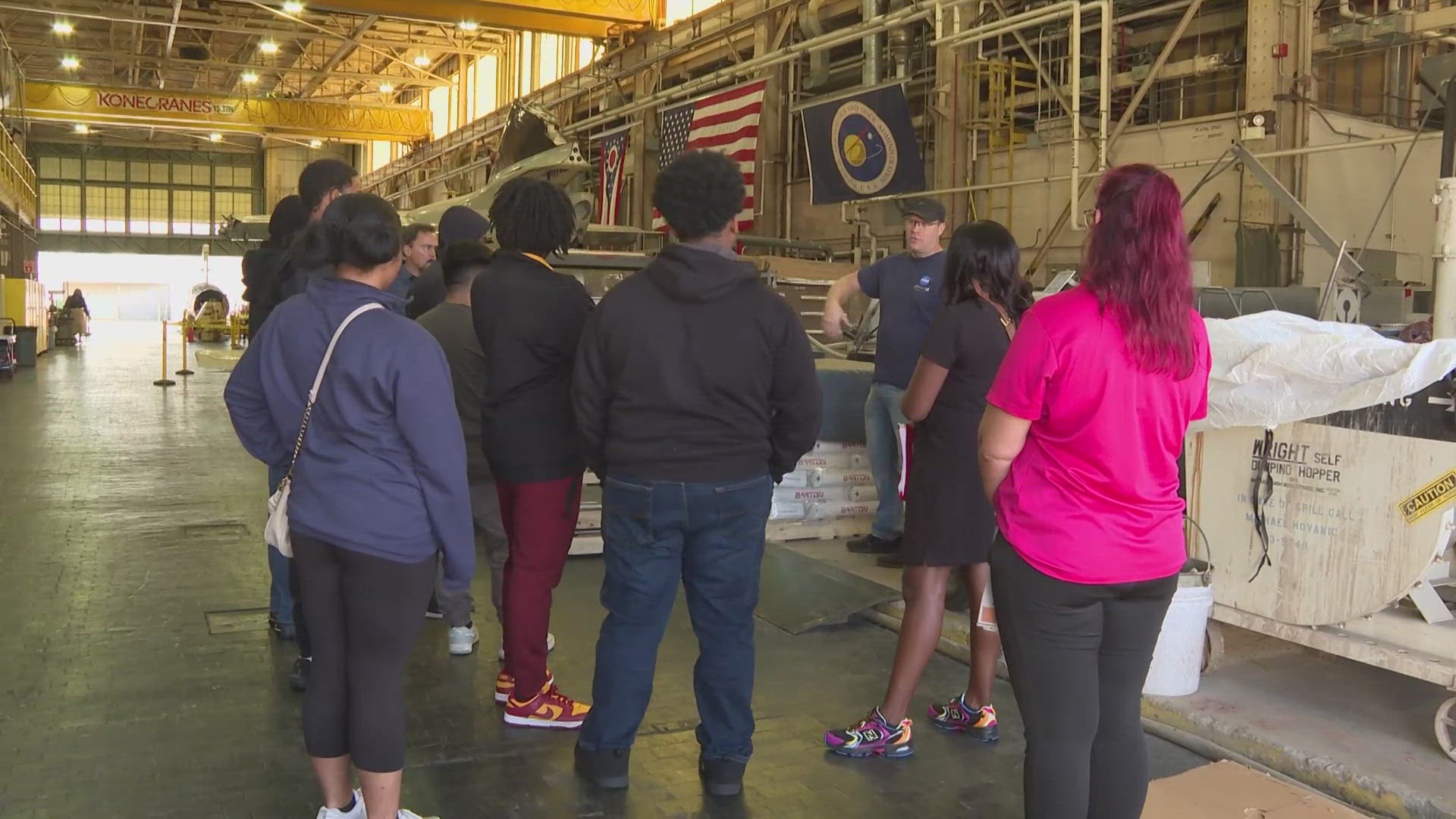CLEVELAND — "Welcome to Manufacturing Day here at the NASA Glenn Research Center!"
That’s the greeting David Alexander, a NASA Glenn Research Center Education Program Specialist gave to 3News. More than 100 area students toured facilities the public rarely sees, with the goal being to clear up some misconceptions about careers at NASA and show the different paths to get here.
"At times, it can seem that things can be out of reach here at NASA, because there's a misnomer that everyone at NASA is actually a genius," Alexander explained. "However, contrary to that, everyone at NASA is a hard worker."
NASA machinists, who do the work every day, spoke about the job and the tools used. Christina Rapenchuk came to NASA through an apprenticeship right after high school. In her role, she brings the vision for ideas to life.
"I get to make it, physically make a part and hold from a solid block of metal that was nothing to a finished, usable piece of hardware," Rapenchuk, an engineering technician at NASA Glenn, said.
Students saw the many different shops that function here: metal fabrication which builds the models; the instrumentation shop, where wiring is so delicate microscopes are needed; a machine shop; and for rapid prototyping, 3D printing in plastic and metal.
It may look intimidating, but Rapenchuk says you don't need to be a math whiz to figure it out.
"The different math or whatnot used on a daily basis in your everyday life, that's what you use," she stated.
"That's breathtaking," Monty Henderson, a student at Davis Aviation and Maritime High School in Cleveland, remarked. "I mean, the fact that you can measure things to the millionth of an inch or cut metal with water."
Also impressed is design student Caleb Greenwood from Beachwood High School.
"The 3D printing, like metal printing, I thought that was super amazing," he said. "You could 3D print the parts and put it all together and weld the pieces."
The students also competed in an engineering design challenge, making a drinking straw truss to see how much weight it can hold before failing. They also heard from and got to ask questions to a panel of NASA engineers.
NASA wants to bridge the gap between classroom learning and real-word applications with the desire for these teens to create the next generation of space hardware.
"I definitely see opportunities, (an) interesting career, and I think is very valuable skill," Greenwood reflected. "I can see myself doing something like this."
Other schools in attendance included Cuyahoga Valley Career Center, Warrensville Heights High School, Holy Name High School, Akron Firestone High School, and Shaker Heights High School.

